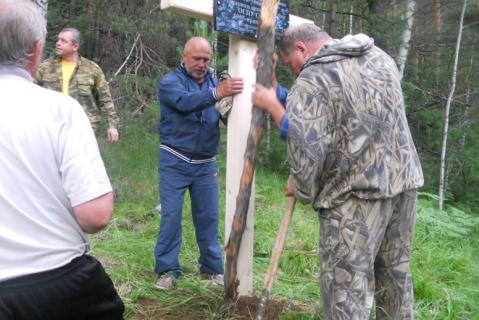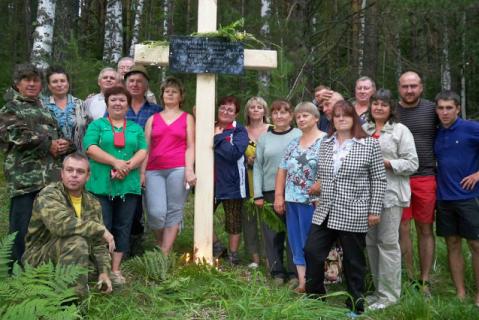The Ust-Mozharka settlement was set up in January 1933 as part of the Mozharka labour colony and came under the Olkhovskaya commandant of the Siblag directorate. The first forced settlers reached Ust-Mozharka in February that year and by June there were 153 families of dekulakized peasants (560 people) in the settlement. In July 1933 a further 536 people joined them. Epidemics of dysentery and typhus led to a high mortality. The men, women and children who died were buried in a cemetery 300 metres from the settlement. Their numbers are not known; a list of 18 names has been compiled from archival information.
In 1947 the unofficial agricultural cooperative was turned into the Chkalov collective farm and the special commandant’s office for the labour colonies was abolished. The forced settlers could only leave, however, after 1954. In the 1970s the settlement was closed; the graveyard was abandoned and taken over by the forest. Today Mozharka is being brought back to life by a community of the church of the “Last Testament” (followers of Vissarion).
On 6 July 2012 Nadezhda Chernykh (Bakhmetyeva) and Ivan Cheremisin, descendants of those sent to Mozharka, erected a memorial cross in the graveyard on Mount Badanka. The cross was made from a small tree trunk. The black marble plaque fixed to it reads: “In memory of our native village Ust-Mozharka, an OGPU labour colony of Siblag, 1933-1980 (approx.). Memory returns the past to us so that we may consider, mourn and understand what happened”.
As well as providing information about those shot in the Region or sent to the camps, A Book in Remembrance of the Victims of Political Repression in the Krasnoyarsk Krai (13 vols. 2004-2014) devoted its most recent three volumes to dekulakization.
The Memorial online database (2025) includes 55,742 victims in the Krasnoyarsk Krai (Region). See Yeniseisk.
Drawing on other sources the database lists more than 12,000 sent to the the Krasnoyarsk Region, some to its camps (1,017), most to its special settlements (11,000).
| Date | Nature of ceremonies | Organiser or responsible person | Participants | Frequency |
|---|---|---|---|---|
|
1st Friday in July
|
Civil rites and Commemorative Services
|
nk
|
former inhabitants of Mozharka
|
Annual event
|
|
nk
|
Commemorative Services
|
nk
|
nk
|
From time to time
|
| State of burials | Area | Boundaries |
|---|---|---|
|
A few nameless grave-markers have survived; there are grave mounds and subsidence over mass burials
|
not determined
|
not delineated
|
[ original texts and hyperlinks ]
D. Kalyuga, “The bell of memory rings in my heart: activities of the Ust-Mozharka labour colony”, Kuraginskaya School No 1, Krasnoyarsk Memorial Society, 2006
N. Nikulina, “The Ust-Mozharka labour colony”, Nikulin family website, 17 October 2011
Materials of the archive department of the Kuraginsky district administration
N.V. Leontyev, “The Mozharka labour colony”, The Minusink region martyrology, late 1920s to 1950s: Minusinsk museum of history and local studies
“Report by N. Chernykh”, Archive of RIC Memorial (St Petersburg)




